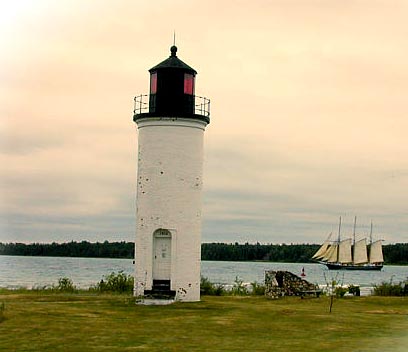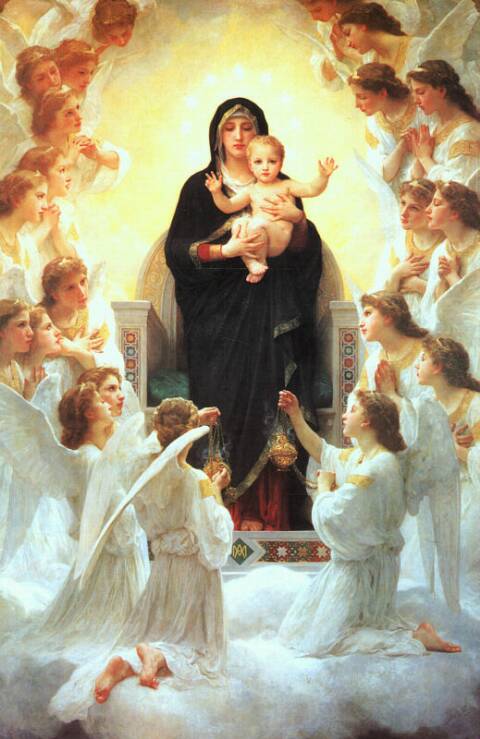Finding Out
In the summer of 2000, our family took a vacation to Beaver Island, Michigan. We thoroughly enjoyed two weeks on the isolated island in the middle of Lake Michigan. The island had a slow pace and a small-town feel that we loved. Everyone knew each other and would wave as they drove by on narrow, gravel roads. I was about four months pregnant at the time and I would get up at dawn, sit on the front stoop of our rented A-frame cottage with my coffee and watch the deer grazing in the delicate morning light. We spent long, lazy days on the beach, took in every sunset and at night, my husband and I spooned and listened to the orchestra of frogs and crickets, our growing baby in my big belly between us. This trip marks a sort of end of innocence for me; the end of our lives before Down syndrome and before Grace.
A few weeks later, I received the news we had been fearing. The ob/gyn called at work to tell me that the test results on my child were positive for Trisomy 21. Her words hit me like a ton of bricks. In that moment, it felt like the floor caved in around me, creating a giant hole into which the room, the building and a few distant hope and dreams disappeared. And then I was sitting at the desk on a windy cliff in the middle of nowhere, holding the phone to my ear. “By the way, it’s a girl,” the doctor added.
In the coming days, the doctors explained that we had the option to terminate the pregnancy. They said some people decide that they don’t want to bring a child with Down syndrome into the world. They were expecting us to make a choice. They suggested we consult with a geneticist, so we did; though it wasn’t clear to me why. It wasn’t like there was anything s/he could do. Her genes were what they were; they were not going to change.
In the 1850s, John Langdon Down published an essay in which he described a set of children with common features who were distinct from other children with mental retardation. Down was superintendent of an asylum for children with mental retardation in Surrey, England when he made the first distinction between children who were “cretins” (later to be found to have hypothyroidism) and what he so crudely referred to as "Mongoloids.” (Thankfully, the language we use to describe these traits in people has improved dramatically.)
Scientists have known since 1959 that the most common cause of Down syndrome is a triplication of the 21st chromosome. When embryonic cells are dividing, during meiosis, the pairs of chromosomes are supposed to split up and go to different spots in the dividing cell. However, occasionally one pair doesn't divide, and the whole pair goes to one spot. If a sperm or egg with an abnormal number of chromosomes merges with a normal mate, the resulting fertilized egg will have 47 chromosomes instead of the usual 46.
So, we learned all of the science and then we went home to cry. We stayed in our room and cried, both of us. I had never seen my husband cry like that before, nor have I since. They wanted us to think about ending this pregnancy, and all we could say is, “We can’t.”
Yet, when we thought about having the child, the prospect was almost scarier. It was as if there were two long, black hallways in front of us and we had to choose one.
We emerged from what seemed like a three-day cry accepting the fact that we were going to have this baby and that she would be born with Down syndrome. I got my hands on every book and navigated to every website I could find to learn more about what that would mean for her and for us. The more I read, the more I began to realize that this microscopic bit of extra genetic material that was changing the way our baby was growing inside of me, would forever affect the way she would develop and was also about to redirect the course of our lives in ways we could not know. That’s one powerful little extra chromosome.
We went on with our everyday lives, though in somewhat of an emotional fog, never really able to stop thinking about the baby. Sometimes I could not sleep at night; I felt shell shocked and tired, consumed by worry. People tried to console us as we awkwardly shared the news. The most common reaction was “oh, that’s a shame.”
Gradually, those with loved ones with Down syndrome came out of the woodwork, providing what was to me the greatest comfort; the understanding that our daughter, whom we planned to name Grace, would be loved. Once I realized that we and others would love her, it made it increasingly easier for me to sleep at night and to prepare myself for what would come next. I knew I could never go back to that innocent time of the days on Beaver Island, but I was prepared to go forward.
As I neared Grace’s delivery date, I began to pray, more desperately than I ever had in my life, to the Virgin Mary. I pleaded with Mary to give me the strength that she must have had before giving birth to Jesus. I thought that she, of all people, would understand the fear and worry that I was facing. She was going to give birth to a child who was different, special, and she probably didn’t know what to expect, yet she found the strength. I asked her to share it with me and my prayers were answered. I received the strength I needed, but only as the carrier. Her strength went right through me and right into Grace.
Ed. Note:
The author of Stray Thoughts is the mother of two lovable children, one of whom has Down syndrome. She and her family plan to return to Beaver Island some day.
Stray Thoughts...

